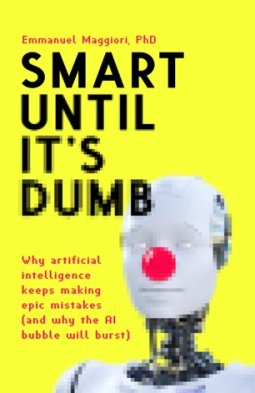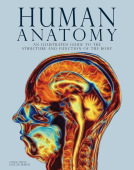
Smart Until It's Dumb
Why artificial intelligence keeps making epic mistakes (and why the AI bubble will burst)
by Emmanuel Maggiori
This title was previously available on NetGalley and is now archived.
Send NetGalley books directly to your Kindle or Kindle app
1
To read on a Kindle or Kindle app, please add kindle@netgalley.com as an approved email address to receive files in your Amazon account. Click here for step-by-step instructions.
2
Also find your Kindle email address within your Amazon account, and enter it here.
Pub Date Jan 24 2023 | Archive Date Mar 21 2023
Talking about this book? Use #SmartUntilItsDumb #NetGalley. More hashtag tips!
Description
Artificial intelligence is everywhere—powering news feeds, curating search results and invisibly steering our lives. We talk to it and, increasingly, it talks back. And sometimes its answers seem eerily smart . . . Until they don't.
Billions of dollars have been poured into AI yet it keeps surprising us with its epic fails – confidently wrong chatbots, inadvertently racist photo apps, well-meaning autonomous cars that fail to recognize traffic cones.
Industry insider Emmanuel Maggiori cuts through the hype, revealing the deceptively simple mechanisms behind AI’s impressive results – and its spectacular blunders.
Learn the dark secret of the AI industry – how unreasonable expectations, shady practices and outright lying have inflated a bubble of monumental proportions.
Read Smart Until It’s Dumb to discover how AI really works, why it’s not always so smart, and why the AI bubble is about to burst.
About the author
Emmanuel Maggiori, PhD, is a 10-year AI industry insider, specialized in machine learning and scientific computing. He helps companies build complex software. He has developed AI for a wide variety of applications, from extracting objects from satellite images to packaging holiday deals for millions of travellers every day.
Available Editions
| EDITION | Paperback |
| ISBN | 9781838337223 |
| PRICE | £9.99 (GBP) |
Average rating from 12 members
Readers who liked this book also liked:
Kyle Thiermann
Biographies & Memoirs, Nonfiction (Adult), Parenting, Families, Relationships


















